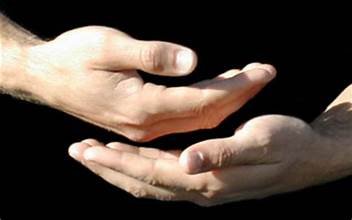HANDS
Have you ever seen a diagram showing which areas of the brain correspond to different parts of the body? A surprisingly large area of our brain relates to the hands. When we use our hands, we are, in essence, giving our brains a good, healthy workout. If you’re a person who likes to work with your hands, you know how soothing it can be to get involved with a task you enjoy. For instance, when I’m working in my garden, I can feel stress and tension dissolve away. It’s very therapeutic. Perhaps you feel the same way about knitting, or sculpting, or working on your car. I wasn’t at all surprised to read that working with one’s hands has emotional benefits, but research is now pointing to how hands-on activities can benefit memory skills, too. By the way, these benefits don’t appear to apply to rote tasks like typing or thumb-scrolling through an online feed, but only to the creative, imaginative use of the hands and fingers.
In Qigong, we incorporate lots of “mudras” or hand positions to help focus and direct our energy. For instance, crossing our palms over the lower abdomen helps center us. We feel our thoughts sink down to where they harmonize with the calming rhythm of deep, slow breaths. We hold our hands in “prayer pose” in front of our chest to bring balance and peace to our hearts. The Animal Frolics include 5 different hand positions which allow us to embody the quality of each animal: the sinuous strength of a tiger grasping its prey, the dexterity of the clever, playful monkey, or the soft feathers of a crane flying high above the earth.
“You know, we evolved in a three-dimensional world, and we evolved to interact with that world through our hands,” says Dr. Kelly Lambert a professor of behavioral neuroscience at the University of Richmond in Virginia. “I think there are a lot of reasons why working with our hands may be prosperous for our brains.”
The next time you do your Qigong practice, bring a little extra appreciation and attention to your hands and fingers. They are expressive, intelligent conduits of energy, like 10 little minds at the end of each arm, speaking with the language of movement.

